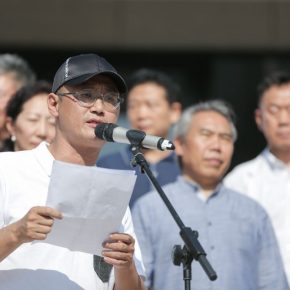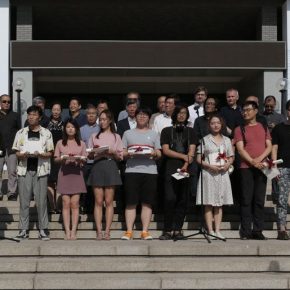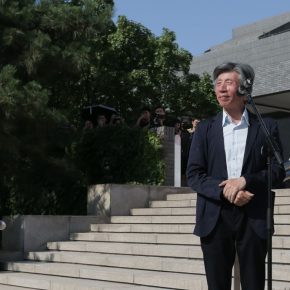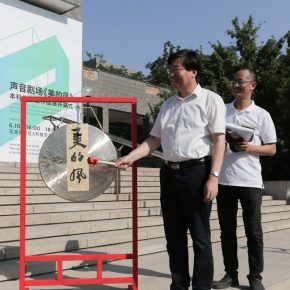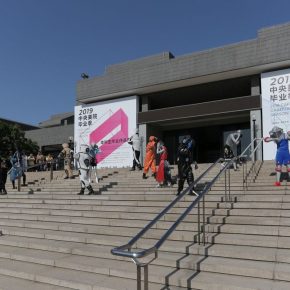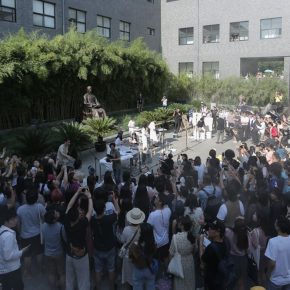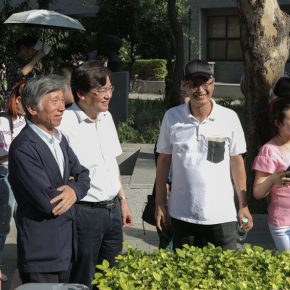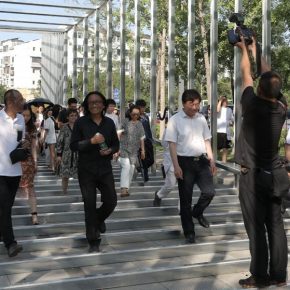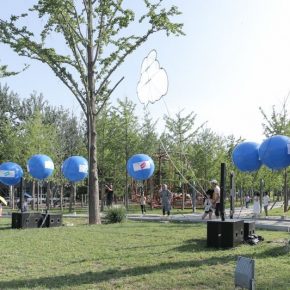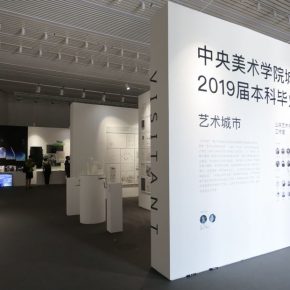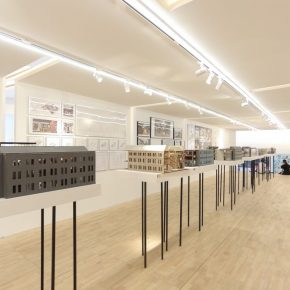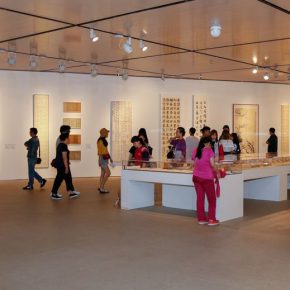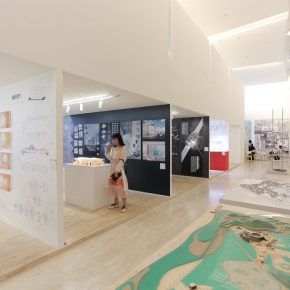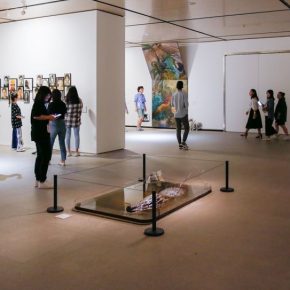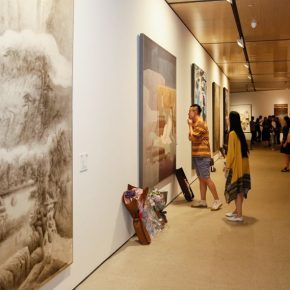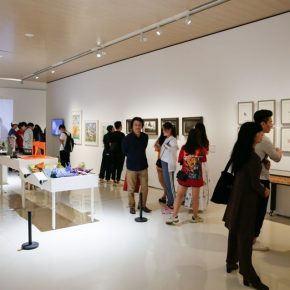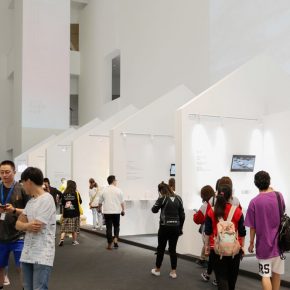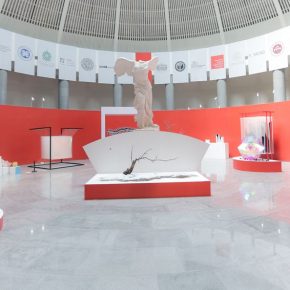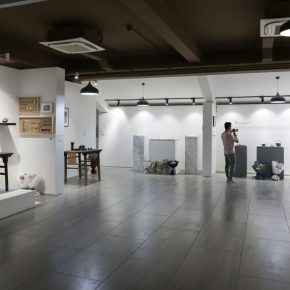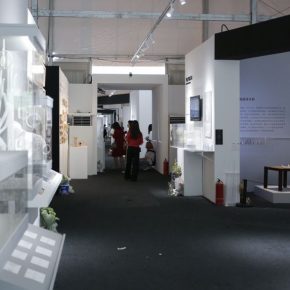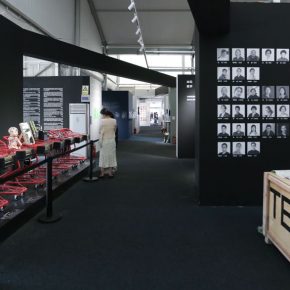
Why have the degree shows of the Central Academy of Fine Arts which are held every year, become a hot spot of annual exhibitions? Is visiting exhibitions to find differences in art, or to cater to curiosity? No matter what the reason is, you can feel the artistic ecology presented by the young artists.
Perhaps a problem is always the most powerful reason for action. What is the difference between this year’s undergraduates’ and graduates’ degree shows in the Central Academy of Fine Arts? What’s new in this year’s undergraduate graduation exhibition? What do art and youth mean for these graduates? Although this exhibition might have underlying answers to these questions, you still need to go to visit it and think it over.
What’s new in this year’s undergraduate graduation exhibition?
CAFA undergraduate graduation exhibition has always been endowed with a kind of expectation, a kind of pressure as well as a kind of symbolization, all of which have originated from the history of CAFA and present its current state. The 2019 CAFA Undergraduate Graduation Exhibition began on June 6 and will remain on view till June 25. The undergraduates’ degree show is displayed in various schools and departments, at the Huajiadi Campus of the Central Academy of Fine Arts, from the CAFA Art Museum, Auditorium, Exhibition Hall of CAFA History, Amphitheater, Galleries of Building 7, and the Gypsum Sculpture Exhibition Hall. With an open and comprehensive display of more than 2,000 works by 893 undergraduate students in School of Chinese Painting, School of Plastic Arts, School of Experimental Art, School of Humanities, School of Design, School of Architecture and School of Urban Design.
On the first floor of CAFA Art Museum, there are works presented by graduates from the School of Urban Design and the School of Humanities. The School of Urban Design mainly displays furniture design products on the first floor of the museum. These works convey diversified concepts combined with technology, fashion and design. The exploration of innovative design materials and humanistic design elements are showcased. From designing daily appliances for life, such as umbrellas, printers, tableware, speakers, perfumes, to conceptual furniture and furnishings. All of them reflect the artistic and creative design thinking and the importance of the regeneration of material functions. The picture book studio’s undergraduate creation exhibition is also on the first floor of the Museum. Their works maintain a certain quality, telling wonderful stories through elaborate and meticulous paintings.
The theme of the undergraduate exhibition by the School of Humanities is “Youth Academics”. The exhibition is preceded by “words” and “things”. Compared with the famous essay by Foucault, this title is closer to a pictogram of exhibits. The poster on the exhibition wall analyzes the word frequency in essays from a wide range of figures, and displays essays in the form of “knowledge forest” through the rotating magazine racks. The second half of the exhibition area is where discussions and thought collisions occur. Although the theme and content of the exhibition have been innovated, the display method continues with the previous route, but it is also difficult to make academics more easily approachable.
On the second floor of the Museum, works by the undergraduates from the School of Plastic Arts are concentrated together, including murals, oil paintings and Chinese paintings. What is the appearance of this show as an important dimension of pure art? The themes of realistic oil paintings are mainly figures from personal portraits to group portraits, as well as landscapes and other themes. The abstract oil paintings have turned from discussions on forms to expressions of materials. The works from the Department of Mural Painting emphasizes the explorations in expressive mediums while paying more attention to the exaggerated expression of forms, thus seeking for a unique decorative meaning and some works fall into the trap of installation art. In Chinese paintings, the innovation of landscape works is greater than the skills. The meticulous paintings can be perceived of their intentions from figures to flowers and birds. The creation of figures in Chinese paintings focus on a relatively wide range of social groups. From the image of ethnic minorities to working people like the fishermen on the beach, although most of the creative themes and contents are more self-focused, occasionally they will present things that are of common concern. The overall creations present achievements in academic learning with a solid professional foundation and rigorous creative methods and in the context of art history, they find their own preferences, hatching their own patterns in their studies.
On the third floor of the museum, graduation works by the Department of Sculpture and School of Experimental Art are featured. Entering this exhibition area, is like entering a playground of art, these works take up a lot of space. This year’s sculptures are more poetic than last year’s material exploration, but some of the works continue the route of last year, still showing the classical aesthetic of academicism. The works from the School of Experimental Art are multi-dimensional and interactive. The presentation of the works themselves is a collection of interactive needs. In many works, it is necessary to develop through interaction with the audience. This interactive element is also widely found in works by graduates from other schools. The themes of some works go deep into the discussions of social phenomena, such as the responses to homosexuality, environmental issues, human nature and other issues.
The graduation works from the School of Design show a broad vision and a unique perspective, themes of their creations have been focused on the thinking and concern on the future destiny of people and society. The purpose and significance of design are no longer the simple packaging and presentation of a product in a pure sense. Instead, it is a reflection of society through design, and creative thinking triggered by design.
The theme of the undergraduate graduation exhibition by the School of Architecture is “Experiment”, which means pioneer, or avant garde. This year with the 100th anniversary of Bauhaus, in the post-Bauhaus era, the exhibition by the School of Architecture have nourished the experiment of architecture through the experimental nature of art. These design works cover architecture, urban design, landscape studies, interior design and other fields. The works show criticism and development in the fields including the nature of the oriental, diverse regions, urban and rural developments, and urban renewal, which eventually resort to an extensive involvement in social life.
Although the undergraduate graduation exhibition will be exhibited every year, various graduates in each year will endow it with their inner meanings. However, if you look at the teaching objectives of CAFA, the graduation works should include techniques, thinking, aesthetics and artistic accomplishments. In the context of this epoch, this graduate exhibition shows an attempt to break through the old patterns, focusing on the depth of the professional field, emphasizing the expression of the individual spirit while integrating the transboundary expressions of modern technology.
What are the differences between the degree shows of undergraduates and postgraduates in CAFA?
The differences between them are not just formed by various educational purposes of schools, but they can also be related to their respective stages of developments. From the scales of exhibitions, there are more than 2000 artworks by 893 undergraduates and over 1000 artworks by 316 postgraduates and doctoral students. Thus the graduation exhibition of undergraduates conveys more individualistic expressions full of young vigor. From the professional level of creations, the gap between them is gradually widening, as postgraduates tend to conduct more in-depth research and their creative techniques are more sophisticated. Although there are outstanding works of undergraduates excel those of postgraduates, but they generally present a growing state. From the perspective of works they present, works by undergraduates seem to express their own ideas or opinions with what they have learned while those by postgraduates convey their researches and explorations in their disciplines. It can be said that the differences between them including age difference, various concerns and depth in thinking.
What do art and youth mean for these graduates?
The CAFA undergraduate graduation exhibition is destined to attract the widest social attention. Spectators do not only expect the charm of art works, but they also look forward to being touched by the vitality of youth. The exhibition presents a state of youth, they are a group of “young artists.” Growing works mean trying, exploring and creating. They use art to explore the current issues and use art to talk about the growth of youth.
The exhibition is also a youth theatre, with colorful exhibition halls, which provokes people’s curiosity. The vitality of youth floats into the works, their forms provoke the aesthetic desires, which allow people to enter the room that releases their young desires. All kinds of emotions are scattered all over the place, passionate, delicate, paranoid, bold, straightforward, confused, rude, powerless and so on. But they still struggle and yearn for the beauty of youth and art.
Although the Graduation Exhibition comes every year and it may have become a form of convention, the artistic and aesthetic activities under this convention do not only offer a better understanding of art, but it also offer a more willing approach to make you think after you visit the exhibition. In the summer of June, let's stay in the shade of art and find an artistic ambience.
Text by Lin Lu, translated and edited by Sue/CAFA ART INFO
Photo by Hu Sichen/CAFA ART INFO


